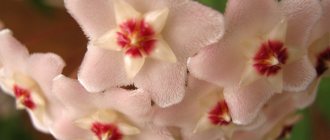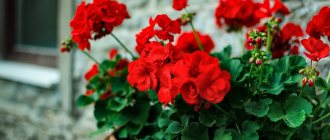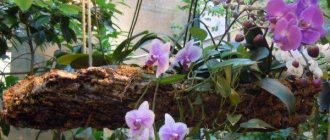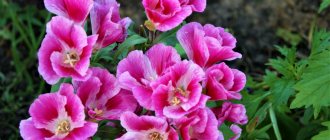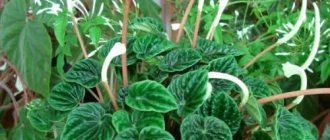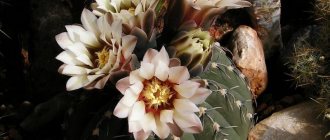Indoor geranium is familiar to most people since childhood. The second name of the flower is pelargonium; its use in garden landscaping has recently become widespread. This is due to the attractive appearance of the plant, diversity of species and high medicinal properties. A more thorough acquaintance with an old acquaintance will reveal many interesting facts and, perhaps, in the near future your dacha will be decorated with aesthetic geraniums.
Can it be grown outside?
Let's consider whether the plant can be planted in an open area. Absolutely all varieties of geranium feel great in open ground , you just need to choose the right place. It looks great in landscape design. This plant is often used as a smooth transition between shrubs that differ in color and bushiness.
Interesting fact! Geranium in open ground plays a role not only of a decorative nature. The fact is that the root system of the plant is superficial, and it kind of covers the top layer of soil, thereby preventing the growth of weeds and drying out of the soil.
In addition, the flower promotes air and water aeration and is suitable for land reclamation.
Disembarkation
When planting cuttings or divisions, it is necessary to harden the young plants a week before transferring them outside .
For this purpose, they are taken outside every day and left at the landing site or in conditions as close as possible to garden conditions.
Pots of flowers can be left overnight if a significant drop in temperature is not expected.
Plants hardened in this way after transplantation adapt much faster and easier to new living conditions, which will allow them to bloom quickly and abundantly.
Pelargonium prefers light soils. Therefore, to facilitate plant adaptation, sand and fertilizers are added to the holes. The planting depth in open areas should be the same as in a pot.
After transferring the flowers, the soil around them is mulched, and the soil is acidified with a light solution of citric acid at the rate of 1 tsp. dry product per 3 liters of water.
The size of the prepared hole should be slightly larger than the diameter of the pot in which the planting material was located. This is done in order to protect the root system during transfer.
Site design and photos
Pelargonium bushes are compact in size, so they can be used as border plants planted along garden paths. This flower also looks beautiful in potted arrangements or in larger flowerpots.
Attention! This placement controls the growth of the root system, which makes it easier to move the plants back into the house.
Look at the photo to see what the plant looks like on the site:
Video about planting pelargonium on a site:
Preparing the plant, soil and conditions
Usually a cutting from an adult healthy bush is planted in open ground. But you should not “stick” a freshly cut cutting into the ground, as it may simply die.
First of all, the seedlings are prepared - the sections are treated with activated carbon or ash, and then the cuttings are kept in a solution that stimulates root growth. It turns out that the cuttings need to be separated from the adult bush three weeks before planting in the ground. As for an adult plant, no preparation is needed; it is simply carefully removed from the flowerpot and transferred to a prepared place.
The soil is prepared as follows:
- In the fall, during digging, mineral fertilizers are added to the soil; if possible, you can add humus and only then dig.
- Before planting geraniums in open ground, the soil is acidified - you can use citric, oxalic acid or ferrous sulfate.
- The soil must be provided with good drainage.
- Place in the hole in layers: peat, sand, garden soil. If you can’t prepare such a mixture yourself, you can buy a ready-made one in the store.
A hole for geraniums is dug based on the size of the root system - the roots should be positioned freely. In addition, it is better to choose a bright area, but not exposed to direct sunlight.
The most suitable varieties for the garden and their photos
There are many species of this plant, but the following are especially popular among gardeners.
Lugovoy
A dense shrub that can grow up to 1.2 meters in height . It blooms lilac-lilac, and the plant will delight you with buds by mid-summer.
Balkan
This culture creates real creeping thickets of bushes 30 cm high. Flowering begins as early as June, the plant forms a reddish or purple carpet.
Bolotny
An excellent crop to grow in the garden. The stems are straight, branched up to 70 cm in height, forming a compact, dense bush, with flowering beginning in June.
Fabulous
The bush grows up to 50 cm tall. It is distinguished by its decorative qualities, such as, as soon as the buds bloom, their color is light purple, and closer to autumn they change their color to a brick shade.
Large-flowered
The bush grows up to 50 cm in height, the leaves are round, large on stalks, which can grow up to 10 cm. The diameter of the flowers in a bloomed state is 5 cm. The culture is very decorative with proper care with purple flowers, on which red veins are clearly visible.
Georgian
An excellent variety that does not need to be transferred indoors for the winter ; in one place the plant feels good for 12 years. This variety of geranium is quite unpretentious to weather conditions. A beautiful plant, the bush of which is completely covered with purple flowers during flowering.
Blood red
A beautiful, ornamental plant with double buds similar to roses. A perennial flower that grows in one place for more than 15 years and all this time blooms and develops profusely. The culture does not tolerate direct sunlight and is suitable for areas in partial shade.
Step-by-step instruction
Movement into soil by rhizome
It often happens that after the winter period, the stems of geraniums become very elongated - it loses its decorative appearance. There is a way out - transplant the plant into open ground, cutting off all the shoots, leaving 5-10 cm of stumps. You need to proceed as follows:
- Use a sterile instrument to trim the geranium.
- Treat the sections with an antiseptic.
- Moisten the soil in the flowerpot.
- Prepare the bed and dig holes corresponding to the size of the root system.
- Carefully remove the geranium along with the earthen lump.
- Place the roots in the hole and cover with soil, slightly compacting the soil around the bush.
- Pour over warm water.
Seedlings
Geranium seedlings are planted in open ground in mid-May , when the likelihood of morning frosts is minimal. Plants are planted in the prepared bed at a distance of 10-20 cm from each other and watered abundantly. For the first 2 weeks, the seedlings are shaded from direct sunlight, but care must be taken to ensure that the soil in the garden bed does not dry out.
Seeds
If you decide to grow geranium from seeds, then you should take care of this at the end of January, at the beginning of February, this is the only way you will get a flowering plant in the summer.
In order to sow seeds you need:
Prepare a container for seedlings and appropriate soil - you can buy soil for seedlings at the store.- Place good drainage on the bottom of the box, then a layer of soil.
- The seeds are distributed over the surface at a distance of 5 cm from each other and sprinkled with a small layer of soil.
- Moisten the soil by spraying and set up a small wig, covering the box with plastic wrap.
- After 2 weeks, the first shoots will appear, at this time the film should be removed and the container with seedlings should be placed in a warm, bright place, but without direct sunlight.
As soon as the time for planting in open ground approaches, the seedlings are planted as described earlier.
How to transfer from a pot to the street?
Let's look at how to plant a plant from a pot into the ground. Once all the preparatory work has been completed, you can begin planting geraniums in open ground. When transplanting an adult flower, the rhizome is first treated with a stimulating substance. You can buy it at a flower shop, but you must use it strictly according to the instructions. The algorithm for planting geraniums in open ground is as follows:
- The soil needs to be dug up to a depth of 35 cm.
- Spread a 10 cm layer of compost over the entire surface of the dug bed, and mix it well with the top layer of soil.
- The hole must be of a certain depth - at least 25 cm. In this case, you need to pay attention to the roots of the plant.
- Place a mixture of peat, garden soil and sand at the bottom of the hole - you can buy it ready-made in the store.
- Carefully remove the plant from the pot, being careful not to damage the root system.
- Place the geranium roots in the prepared hole and cover with soil, slightly compacting the soil around the bush.
- Water moderately with warm water.
When planting a number of plants, it is worth maintaining the distance between the bushes - optimally from 45 to 60 cm, depending on the type of geranium.
Geranium propagation
The plant can be propagated by three methods: lateral branches, dividing the bush or seeds.
Most cranebird species live longer if you divide them every 3-5 years, although you can divide them more often.
Divide the Geranium in early spring, giving the young seedlings time to take root before frost sets in. To divide the Stork's Beak, dig it up and shake off the soil and roots. Use a spatula or knife to separate. Divide the bush, making sure that each separated part has roots and leaves. Transplant each cutting into a new hole and water the plants well.
Many types and varieties of geraniums often propagate themselves by lateral branches. Seedlings - self-gardens can be easily dug up and transplanted to another place.
Propagation by seeds is also possible, but this method is used extremely rarely. When geranium seeds ripen, they are carried by the wind and are independently sown throughout the adjacent area. Collecting seeds and growing them is a labor-intensive process.
Further maintenance of the flower
It is worth immediately indicating that for the first 14 days after transplanting into open ground, the plant must be protected from direct sunlight , that is, the planting bed must be shaded. In addition, you should follow the following rules for caring for geraniums after transplantation:
- Remove weeds around bushes.
- The optimal soil temperature should be within 15-20 degrees - it should not be overheated or waterlogged.
- Insecticides should be used to protect against pests.
- Leaves should never be sprayed.
- Fertilizing is carried out once every two weeks - use mineral fertilizers.
- Before applying liquid fertilizers. Geranium is watered well - otherwise the root system will burn.
- If the plant remains in the ground for the winter, then before frost it is necessary to prune it - each stem is shortened by 5 cm.
More often, geraniums are grown in pots and therefore we have articles about transplanting geraniums into another pot and about planting a shoot without roots.
Landing
Magnificent geranium is grown in open ground in the form of single plantings on lawns. Since the plant is sterile (does not produce fruits or seeds), planting work is carried out only by dividing the rhizome.
- Pour a mixture consisting of peat, earth, sand, taken in equal proportions, into the prepared recesses.
- Plant the plants maintaining an interval of 40 cm between them.
- Moisten the soil slightly and lay a mulching layer of sawdust.
Lighting and location
For full growth and development of the plant, a temperature regime of 15 degrees Celsius is required. The crop does not tolerate direct exposure to sunlight, so it is better to plant it in partial shade. The ideal place is lawns, flower beds, garden plots.
What to do if something goes wrong?
If, after planting, the plant begins to weaken and spots begin to appear on the leaves, the plant may have been infected by parasitic insects. In this case, it is necessary to treat the plant with insecticides.
There are times when, after transplanting geraniums under normal weather conditions, frost occurs. It is not advisable to replant geraniums in pots - unnecessary stress for the plant can lead to illness and a long recovery. You just need to insulate the plant. Cover the soil around the bush with mulch, and the bush itself with covering material.
It is worth noting that the correct and step-by-step actions recommended by experienced gardeners regarding preparing the plant for replanting and subsequent care after it will not cause any problems. It is worth understanding that during the first 2 weeks the flower is especially vulnerable to pests, temperature changes and soil conditions; you need to take good care of it.
Geranium is a universal plant that feels great both in a flowerpot and in open ground in the summer. Geranium has been used in landscape design for a long time and this flower has proven itself well as an ornamental plant, undemanding in care.


